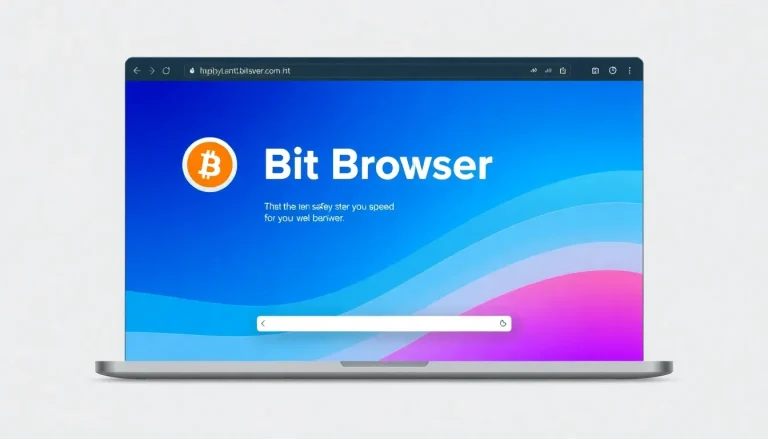
Understanding Competitor Pricing Analysis
What Is Competitor Pricing Analysis?
Competitor pricing analysis involves a strategic examination of how your rivals set their prices relative to your own products or services. This process goes beyond simply looking at a competitor’s selling price; it includes understanding their pricing strategies, promotional tactics, and market positioning. The objective is to glean insights that can inform your pricing model, ensuring that you remain competitive within the marketplace.
For instance, a competitive pricing analysis might reveal that while your main competitors typically price their premium offerings higher based on perceived value, there are opportunities in the market for a mid-tier option that caters to budget-conscious consumers. Therefore, conducting a thorough competitor pricing analysis can help businesses position themselves effectively amid varying consumer demands and expectations.
The Importance of Competitive Pricing
Understanding competitor pricing is critical for several reasons:
- Market Positioning: It helps businesses identify their place within the market. By understanding how competitive prices align with perceived value, businesses can articulate their unique selling proposition (USP) more effectively.
- Profitability: Setting prices without considering competitor pricing may lead to underpricing or overpricing, both of which can harm profitability. Analyzing competitor prices allows companies to find an optimal price point that enhances profitability while remaining attractive to potential customers.
- Consumer Behavior Insights: By analyzing competitors, businesses can gain insights into consumer preferences, behaviors, and willingness to pay. This can provide deeper contextual understanding when adjusting pricing strategies.
- Competitive Edge: Maintaining an ongoing competitor pricing analysis enables businesses to quickly identify shifts in the market, adapt strategies, and potentially seize opportunities ahead of the competition.
Key Components of a Successful Analysis
Successfully conducting a competitor pricing analysis consists of several key components:
- Comprehensive Data Collection: Gather robust data on competitor pricing, including discounts, promotions, and package deals.
- Market Segmentation: Understand how different competitor pricing impacts various consumer segments and how to tailor offerings accordingly.
- Analysis of Market Trends: Analyze pricing trends over time, which can inform pricing forecasts and strategic decision-making.
- Use of Technology: Implement advanced analytics tools and software to synthesize data and draw compelling insights.
Methodology for Competitor Pricing Analysis
Step-by-Step Pricing Analysis Process
The process of conducting a competitor pricing analysis can be broken down into several methodical steps:
Step 1: Identify Your Competitors
Begin by identifying who your direct and indirect competitors are. Direct competitors offer the same type of products or services, whereas indirect competitors may cater to a similar audience but with different solutions.
Step 2: Gather Pricing Data
Collect information related to competitors’ pricing. This can include website data, store visits, promotional materials, and third-party market reports. The objective is to compile a comprehensive list of competitors and their pricing structures.
Step 3: Analyze Your Findings
After gathering data, analyze it to identify patterns and insights. Look across key metrics, such as average price points, pricing ranges, and frequency of promotions. Tools like Excel, Tableau, or specialized industry software can help visualize this data.
Step 4: Synthesize Analysis Into Actionable Insights
Translate your analysis into actionable insights. For instance, determine if your prices should be adjusted based on the competitive landscape or if a new product offering should be introduced to capture a gap in the market.
Tools and Software for Effective Analysis
Leveraging technology can enhance the accuracy and efficiency of competitor pricing analysis. The following tools are particularly effective:
- Competera: This tool specialized in competitive pricing is renowned for its robust analytics capabilities, allowing businesses to monitor competitor pricing and adjust their strategies accordingly.
- Price2Spy: A comprehensive competitor price monitoring tool that provides powerful surveillance and detailed reports on competitor pricing tactics.
- SimilarWeb: Useful for traffic and engagement insights, this tool can help determine how pricing relates to online behavior.
- Google Sheets/Excel: These user-friendly spreadsheet tools are great for compiling and analyzing pricing data, making them accessible for businesses of all sizes.
Data Collection Techniques
Collecting accurate pricing data is crucial. Here are some effective techniques:
- Website Scraping: Tools can automate the process of extracting pricing data from competitor websites.
- Shopper Surveys: Engaging with customers directly can provide insight into how they perceive competitor pricing.
- Social Listening: Monitoring social media channels for discussions about competitors can yield insights on consumer sentiment regarding pricing.
- Primary Research: Engaging in direct observational research through mystery shopping can offer firsthand insights into competitor pricing strategies.
Common Challenges in Pricing Analysis
Identifying Reliable Competitors
One significant challenge is identifying the right competitors to analyze. Businesses might mistakenly include irrelevant competitors or overlook important industry players. Establishing a reliable metric for defining direct and indirect competitors is essential for accurate analysis.
To overcome this challenge, businesses should create a comprehensive competitor map that categorizes competitors into tiers based on market overlap, product similarities, and geographical presence.
Data Accuracy and Reliability Issues
Another significant hurdle can be the accuracy of the data collected. Incomplete or outdated information can lead to flawed insights. Companies should strike a balance between qualitative and quantitative data, ensuring a holistic view of competitor pricing.
Leveraging reputable market research firms or investing in pricing analytics tools can significantly enhance data accuracy, reducing reliance on potentially outdated internal data.
Adapting to Market Changes
The marketplace is dynamic, and prices can fluctuate rapidly due to various factors, including market trends and economic conditions. Therefore, businesses must not only conduct one-time analyses but also establish an ongoing system for monitoring competitor prices.
Regularly scheduled analysis—in monthly, quarterly, or annually—can ensure that businesses remain informed and preemptively adapt their strategies to any dramatic shifts in the competitive landscape.
Implementing Findings from Pricing Analysis
Setting Competitive Prices
Once an analysis is complete, the next critical step is deploying findings to set competitive prices. Organizations should develop a pricing strategy that balances profitability with market competitiveness. Utilizing insights gleaned from competitive pricing data, businesses may opt for multiple strategies:
- Price Penetration: Setting lower prices to swiftly capture market share.
- Price Skimming: Starting with a high price and lowering it eventually to attract more customers.
- Value-Based Pricing: Aligning prices with consumer-perceived value instead of solely on costs.
Monitoring Market Trends
Market trends continuously reshape demand, pricing, and competitive landscape. Post-analysis, businesses should establish systems and procedures for continuous monitoring of key market indicators, including:
- The introduction of new competitors.
- Changes in supplier costs.
- Consumer behavior shifts.
- Technological advancements that affect pricing strategies.
Adjusting Strategies Based on Analysis
Leveraging insights from the pricing analysis also means being nimble in strategy execution. Businesses should adopt flexibility within their pricing models, allowing for swift price adjustments based on competitor moves or market responses.
For example, if a primary competitor lowers their prices, businesses might need to reassess their own pricing structures, perhaps implementing promotional pricing or bundling offers to drive value and retain customer loyalty.
Evaluating Success Metrics
Key Performance Indicators for Pricing
Establishing metrics to evaluate the success of your pricing strategy is imperative. Key performance indicators (KPIs) may include:
- Sales Volume: Monitoring how pricing adjustments impact overall sales.
- Profit Margins: Analyzing profitability after implementing new pricing strategies.
- Market Share: Assessing the difference in market share before and after pricing strategy changes.
- Customer Acquisition Cost (CAC): Evaluating how competitive pricing affects the cost of acquiring new customers.
Customer Reactions and Market Response
A critical aspect of evaluating pricing strategies is gauging customer reactions. Utilizing surveys, A/B testing, and tracking engagement metrics can assist in understanding how customers perceive pricing variations. Regularly seek feedback and incorporate it into your pricing strategy to better align with customer expectations.
Long-term Benefits of Pricing Analysis
Consistent and thorough competitor pricing analysis can yield significant long-term benefits, including:
- Enhanced Revenue: Well-informed pricing strategies lead to optimized sales and earnings.
- Consumer Loyalty: Adopting a pricing strategy that resonates with consumers can foster loyalty and repeat business.
- Strategic Agility: Regular analysis allows companies to be proactive instead of reactive, positioning them favorably in changing market conditions.
- Data-Driven Decisions: Frequent analysis empowers companies with up-to-date knowledge, facilitating strategic decision-making and reducing uncertainty.




